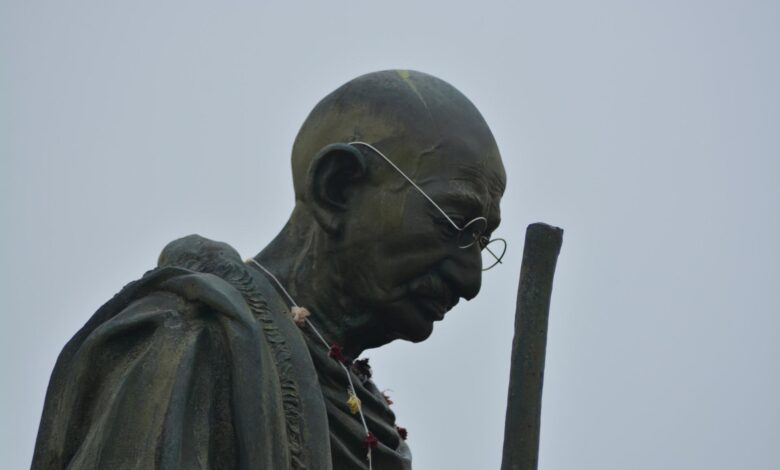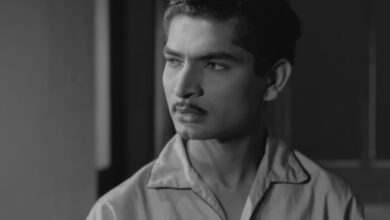A confluence of dharma, ahimsa and sacrifice
The combined message of Dussehra and Gandhi Jayanti is more relevant and necessary than ever

 October 2, 2025, presents a truly rare and profound moment in the fabric of India’s cultural and historical consciousness. On this day, as the nation prepares to celebrate the 121st birth anniversary of former Prime Minister of India, Lal Bahadur Shastri, today is also a remarkable confluence – the 156th birth anniversary of Mahatma Gandhi and the auspicious festival of Dussehra, or ‘Vijay Dashami’.
October 2, 2025, presents a truly rare and profound moment in the fabric of India’s cultural and historical consciousness. On this day, as the nation prepares to celebrate the 121st birth anniversary of former Prime Minister of India, Lal Bahadur Shastri, today is also a remarkable confluence – the 156th birth anniversary of Mahatma Gandhi and the auspicious festival of Dussehra, or ‘Vijay Dashami’.
This convergence is more than a chronological coincidence. It is a spiritual and philosophical alignment of two profound narratives of self-sacrifice for the welfare of humanity. While one story is millennia old, rooted in epic myth and eternal dharma, the other is a recent historical testament to truth and non-violence. Yet, both offer a shared, timeless message of the power of righteousness and the necessity of personal sacrifice in the face of insurmountable challenges.
Moreover, the resonance of these events, especially falling together, provides a profound lens for reflecting on sacrifice, moral courage, and the enduring relevance of their values for the contemporary world.
Dusshera is celebrated as the victory of Lord Rama over Ravana, the 10-headed demon-king who abducted Sita, Rama’s wife. The epic Ramayana narrates the arduous journey of Rama, aided by Lakshmana, Hanuman, and others, culminating in the final battle on Dashami, where righteousness triumphs over tyranny and ‘adharma’.
The burning of Ravana’s effigy on Dusshera signifies not only the physical defeat of evil, but reminds society to purge inner vices – greed, anger, pride, and deceit. The festival, occurring after Navaratri’s period of reflection, underlines values such as truth, justice, and community unity. Rituals and performances, like Ramlila, dramatise the sacrifices individuals must make for social harmony, highlighting Rama’s unwavering commitment and self-sacrifice for the welfare of humankind.
This journey of Lord Ram, as chronicled in the Valmiki Ramayana, is a continuous series of renunciations and trials. He voluntarily gives up his rightful throne to honour his father’s word, endures fourteen years of exile, and battles, not just for his wife, Sita, but for the restoration of cosmic order, or dharma. His actions are not driven by personal ambition but by an unwavering commitment to his principles and the welfare of his subjects, a concept beautifully encapsulated in the phrase maryada purushottam, or ‘the ideal man of high virtues.’ By sacrificing personal comfort and power, Ram establishes a moral compass for all of humanity.
Similarly, Mahatma Gandhi’s life was a living embodiment of sacrifice. His journey from a London-trained barrister to South Africa and as the architect of India’s freedom was marked by a deliberate and conscious shedding of personal luxuries and ambitions.
Donning a simple loincloth, he embraced a life of austerity and service. His philosophy of Satyagraha (truth force) was predicated on the willingness to endure suffering and hardship for a greater cause, believing that moral force was infinitely more powerful than physical might. In his autobiography, The Story of My Experiments with Truth, Gandhi describes this process not just as a political strategy but as a spiritual discipline.
OTHER ARTICLES BY THE AUTHOR
As historian Judith M. Brown writes in ‘Gandhi: Prisoner of Hope’, Gandhi “saw his own life as a kind of experiment in truth, and his politics as an extension of his personal quest for moral perfection.” His fasts, his marches, and his imprisonment were not mere acts of protest. They were profound acts of self-sacrifice designed to prick the conscience of his oppressors and awaken the moral fibre of his people. He sacrificed comfort, security, and ultimately, his life, to uphold the principles of non-violence and truth, liberating not only a nation but also offering a new paradigm for resistance worldwide.
His concept of self-sacrifice was encapsulated in his principles and is best reflected in his statement, “The best way to find yourself is to lose yourself in the service of others.” Gandhi’s relentless struggle, without yielding to hatred or violence, is not only a testament to his achievements but serves as a timeless blueprint for global justice and equality.
Gandhi Jayanti is also the International Day of Nonviolence, as declared by the United Nations, reflecting the universal recognition of Gandhi’s methods in resolving conflict and oppression.
Gandhi and Ram
The spiritual connection between Lord Ram and Mahatma Gandhi – the two great figures runs deeper than parallel narratives of sacrifice. For Gandhi, Lord Ram was not a mere mythological figure. He was the ultimate embodiment of his core principles. Gandhi’s concept of Ram Rajya was not a call for theocratic rule, but a utopian vision of a society based on moral righteousness, justice, and self-governance.
Further, Gandhi’s ethical governance drew inspiration from Rama, advocating morality and decentralisation of power while rejecting all forms of discrimination. For Gandhi, ‘Truth was God’, and to live righteously was the greatest service to society. He even declared that “Whether the Rama of my imagination ever lived or not on this earth, the ancient ideal of Ram Rajya is undoubtedly one of true democracy in which the meanest citizen could be sure of swift justice without an elaborate and costly procedure.”
Mahatma Gandhi meticulously wove the principles of Ram’s life into his political and personal philosophy. Ram’s unwavering adherence to truth (Satya) became the foundation of Gandhi’s non-violent movement. Ram’s journey, which was fraught with challenges but never deviated from the path of dharma, inspired Gandhi’s commitment to righteousness even in the face of severe opposition. Historian (Late) B.R. Nanda notes in ‘Mahatma Gandhi: A Biography’ that “Ram, for Gandhi, was the perfect symbol of his ideal man, who was committed to truth and justice, even at a great personal cost.”
For Gandhi, as he frequently recited Ram’s name and bhajans, it wasn’t just an act of piety. It was a constant reminder of the spiritual strength and moral courage required for the freedom struggle. He saw in Ram the humility, compassion, and courage that he believed were essential for a leader, and he strove to adopt these qualities in all his activities, from leading mass movements to resolving personal conflicts.
Dusshera’s emphasis on fighting inner and outer evil, and Gandhi Jayanti’s exhortation of nonviolence and unity, are urgently needed antidotes to prevailing challenges. Dussehra reminds us that evil, in whatever form it manifests, is not invincible and can be defeated by a commitment to righteousness.
The enduring image of a righteous king battling a powerful demon serves as a powerful metaphor for today’s fight against corruption, injustice, and environmental degradation. Similarly, Gandhi Jayanti’s emphasis on non-violence offers a profound and much-needed antidote to a world torn by conflict and hatred. His methods of peaceful protest and civil disobedience remain the most potent tools for change, as seen in various movements for social justice and human rights around the globe.
In the contemporary world, where political discourse is often dominated by ego, division, and a relentless pursuit of power, the combined message of Dussehra and Gandhi Jayanti is more relevant and necessary than ever. The lessons of both Ram and Gandhi challenge us to look inward and confront our own inner demons – our pride, our greed, our intolerance – before we seek to conquer external foes. Their examples teach us that true strength lies not in aggression but in self-restraint and unwavering moral conviction. Lest we adhere to it.




